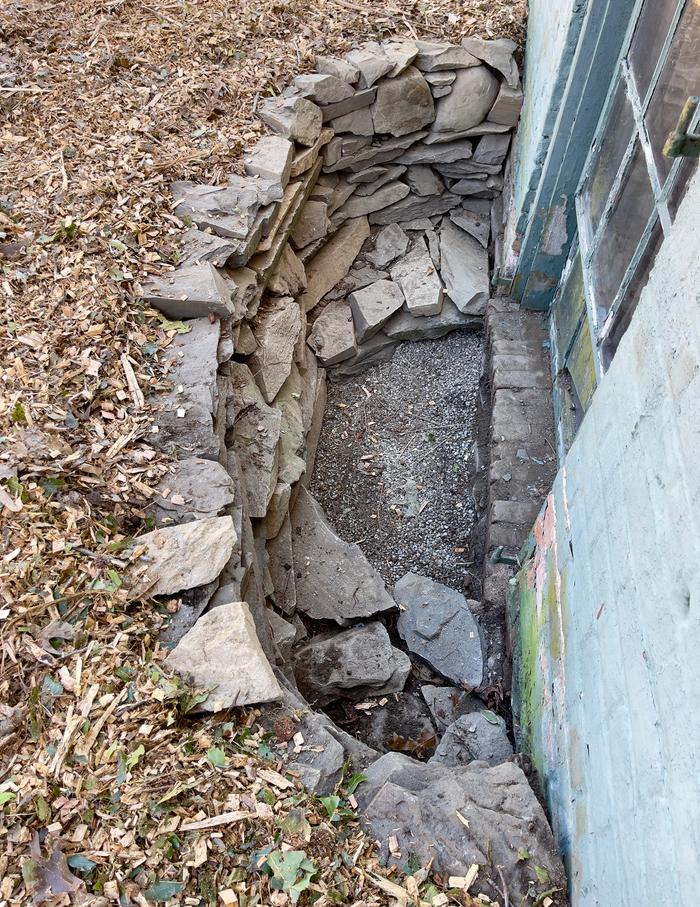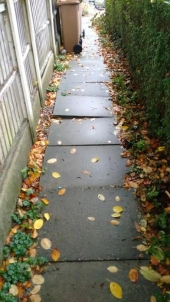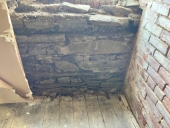
 4
4




Cargo bikes are cool
 6
6




"The only thing...more expensive than education is ignorance."~Ben Franklin. "We can easily forgive a child who is afraid of the dark; the real tragedy of life is when men are afraid of the light." ~ Plato
 3
3




Carla Burke wrote:Have you considered dry-stacking? It would allow for better aeration, drainage, and budget extension...
Cargo bikes are cool
 5
5




"The only thing...more expensive than education is ignorance."~Ben Franklin. "We can easily forgive a child who is afraid of the dark; the real tragedy of life is when men are afraid of the light." ~ Plato
 4
4




Invasive plants are Earth's way of insisting we notice her medicines. Stephen Herrod Buhner
Everyone learns what works by learning what doesn't work. Stephen Herrod Buhner
 5
5




I would tend to agree. My sister has a pile of breeze blocks in one corner of her back yard, mortared together, *NO* idea what the builder was intending, and they look ugly to her. You're not planning to stay in this house long term, so I'd be inclined to make something like an herb spiral where the beauty and utility may be in the eyes of the beholder, easy for the next homeowners to remove if they decide they really want a fountain in that spot!Carla Burke wrote:My thought was that if stacked carefully enough, like the dry-stacked fence rows, it would likely hold up, unless you're throwing stuff into it like a pitcher throwing fastballs, which I didn't think you'd be doing, if any plants remained in, long term, like perennials, and I'd guess you'd be adding compost & mulch in small amounts, on a fairly regular basis, which would keep it full, and not crumbling in? My other thought was that if you try dry-stacking first, and don't like the results, it would be easy enough to re-do, later, whereas if you use mortar, and don't like it, that would be a bigger pain to redo.
Visit Redhawk's soil series: https://permies.com/wiki/redhawk-soil
How permies.com works: https://permies.com/wiki/34193/permies-works-links-threads
 4
4




Cargo bikes are cool

 3
3




Edward Norton wrote:Well that was easy - dry stack it is!
Now I wonder if there’s a Badge Bit for this . . .
 10
10




L. Johnson wrote:
https://permies.com/wiki/99583/pep-earthworks/PEP-BB-earthworks-sand-stack
Yes. Dunno if it will qualify. 2ft tall and 4 ft long. Primarily rocks.

Cargo bikes are cool
 17
17










Cargo bikes are cool
 5
5




Visit Redhawk's soil series: https://permies.com/wiki/redhawk-soil
How permies.com works: https://permies.com/wiki/34193/permies-works-links-threads
 2
2




"The only thing...more expensive than education is ignorance."~Ben Franklin. "We can easily forgive a child who is afraid of the dark; the real tragedy of life is when men are afraid of the light." ~ Plato








 3
3





 5
5




L. Johnson wrote:I also love the idea of thyme for the cracks. You could mix in some succulents here and there probably as well if that is something that appeals to you.

How Permies works: https://permies.com/wiki/34193/permies-works-links-threads
My projects on Skye: The tree field, Growing and landracing, perennial polycultures, "Don't dream it - be it! "
 3
3




Cargo bikes are cool
 6
6




 3
3




Joy to You
 2
2





|
I do some of my very best work in water. Like this tiny ad:
Freaky Cheap Heat - 2 hour movie - HD streaming
https://permies.com/wiki/238453/Freaky-Cheap-Heat-hour-movie
|






